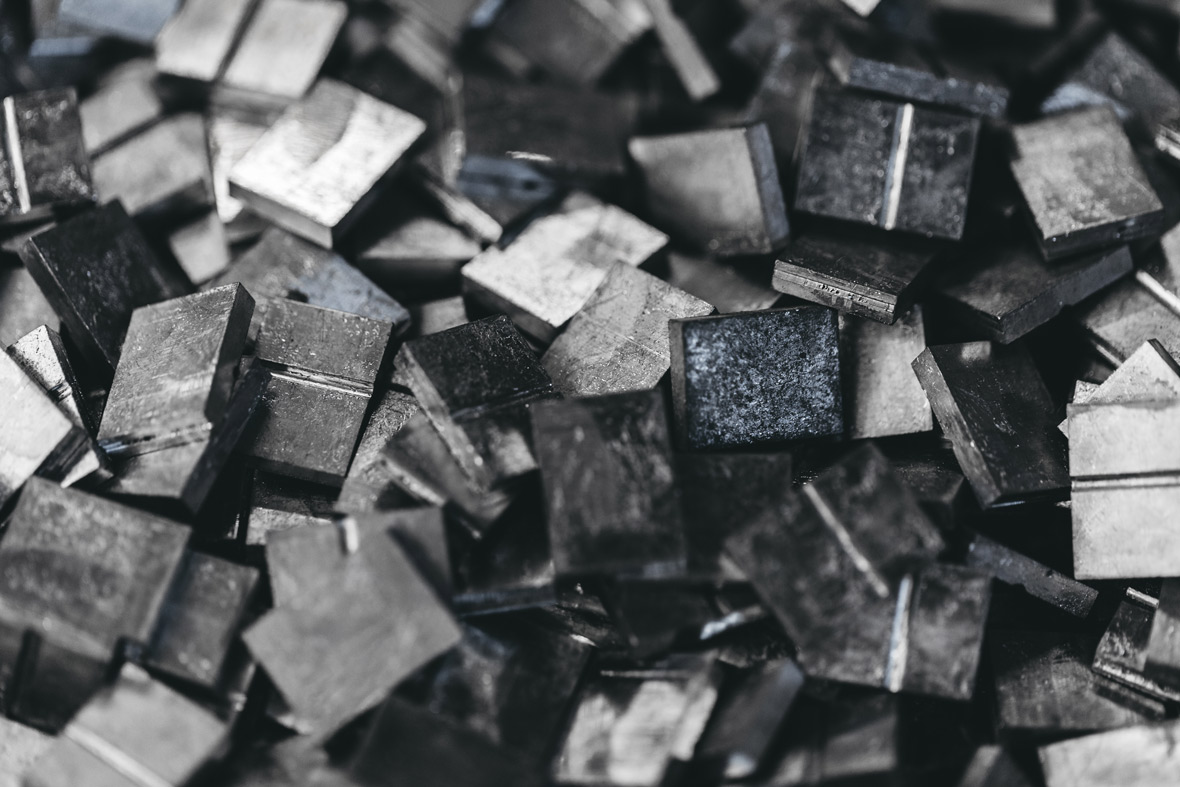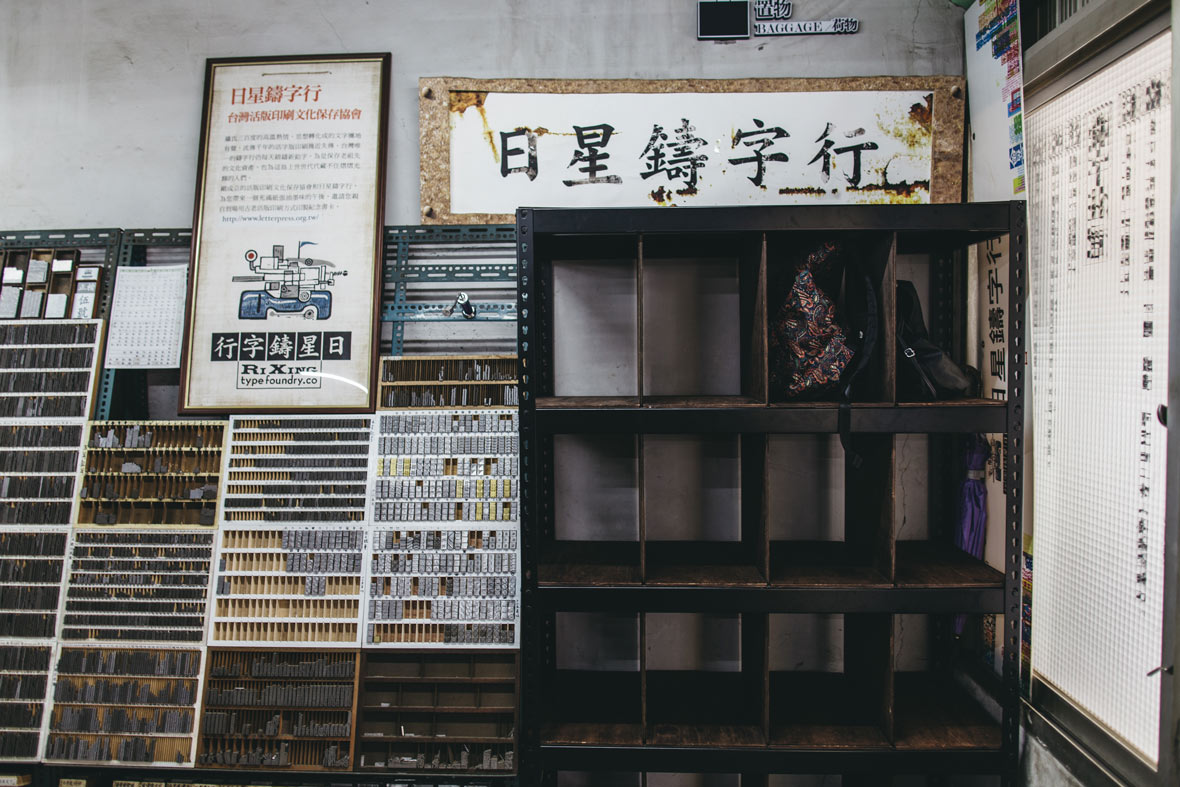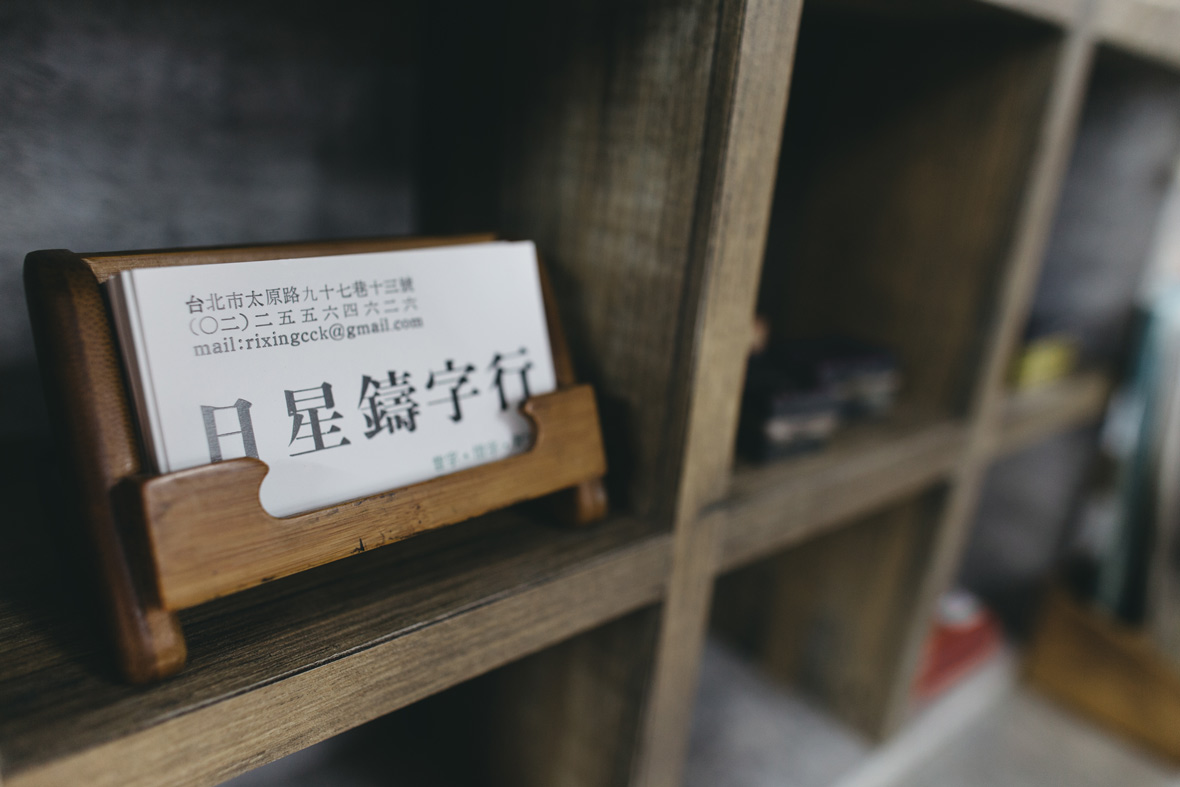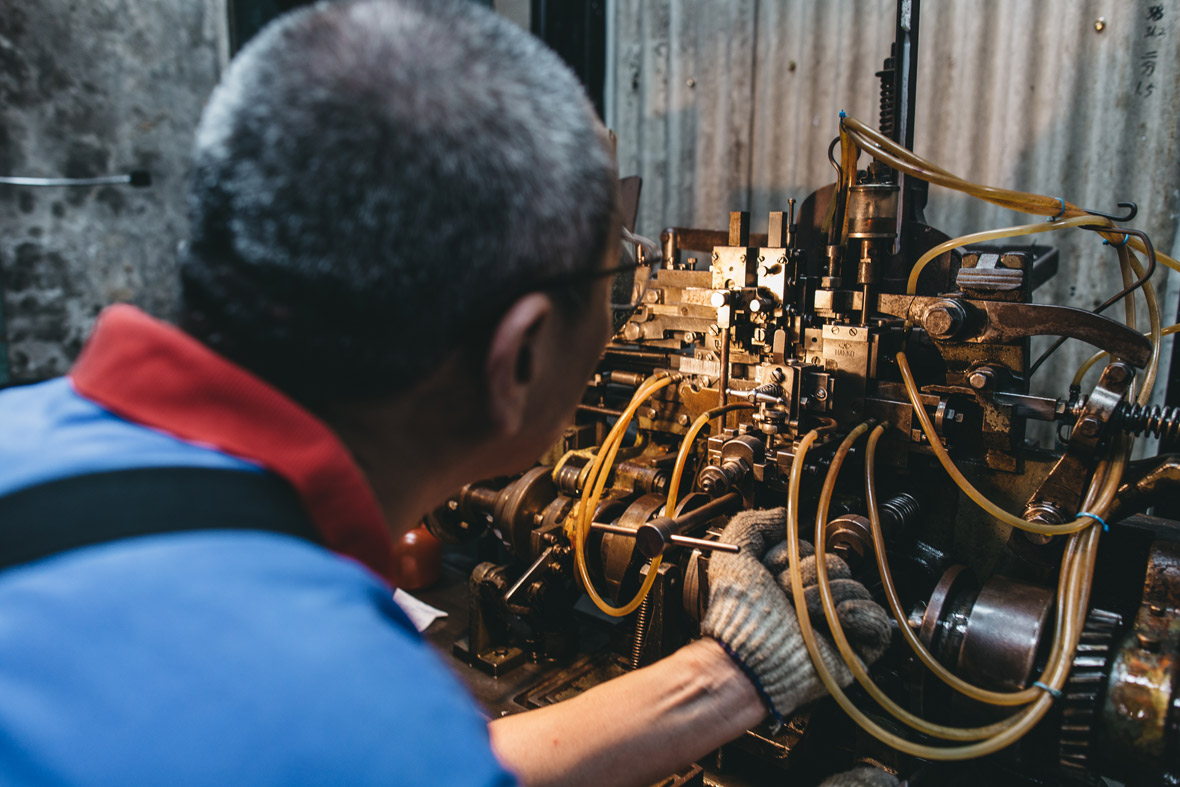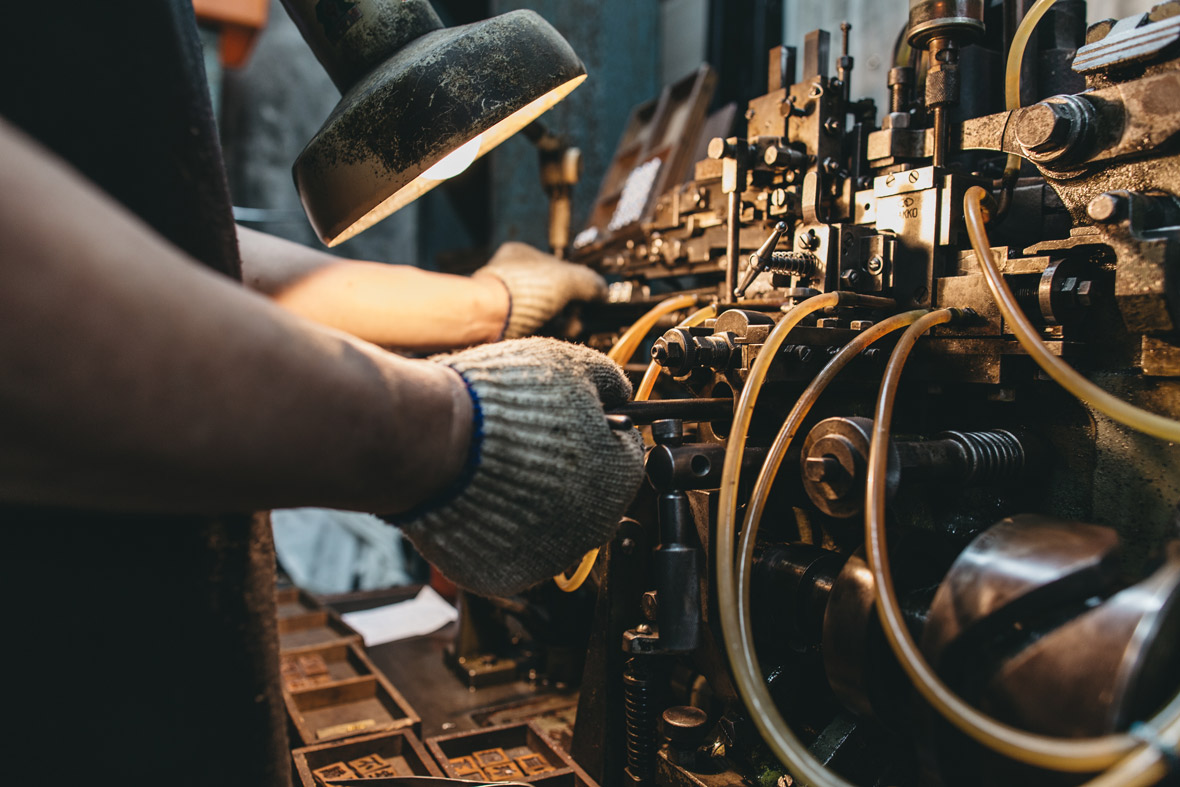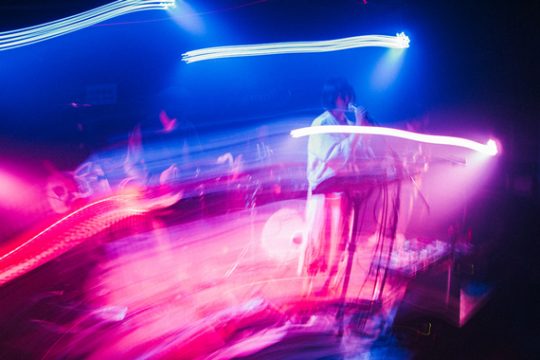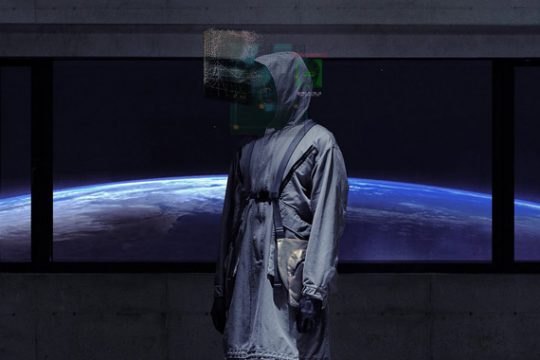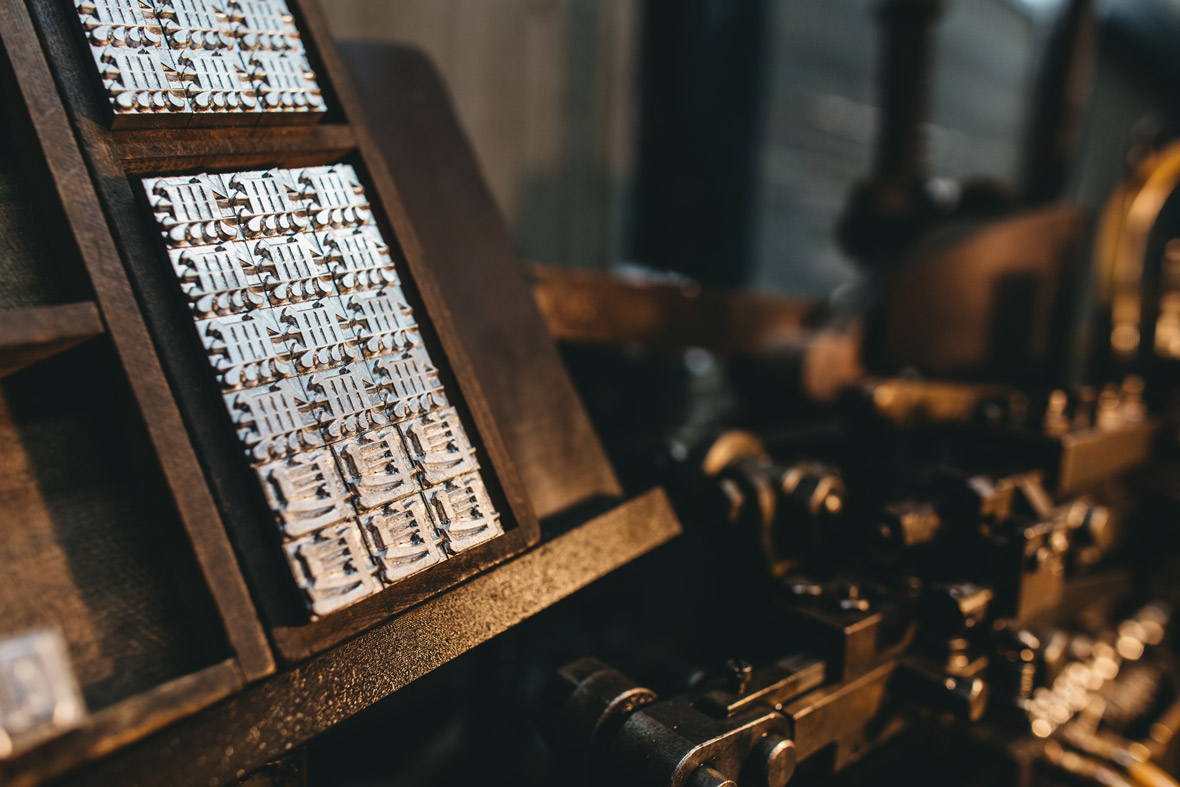
Letterpress printing is a traditional form of relief printing that makes copies by using movable type, which are individually interchangeable components with punctuation marks or letters protruding from a three-dimensional block. In the past, movable types have been created using various materials like wood or ceramics, but metal became the norm as the process evolved. In parts of Asia, the use of metallic type for printing has been traced back to as early as the 13th and 14th century.
活版印刷即傳統凸版印刷的一種,用可靈活替換的文字和標點鉛字,組織在一起排成版面印刷。在過去,鑄字的材料多取用木材或者陶瓷,但隨著活版印刷的進步,材料也漸漸發展為金屬。而在亞洲,金屬的活版印刷歷史可追溯至公元十三或者十四世紀。
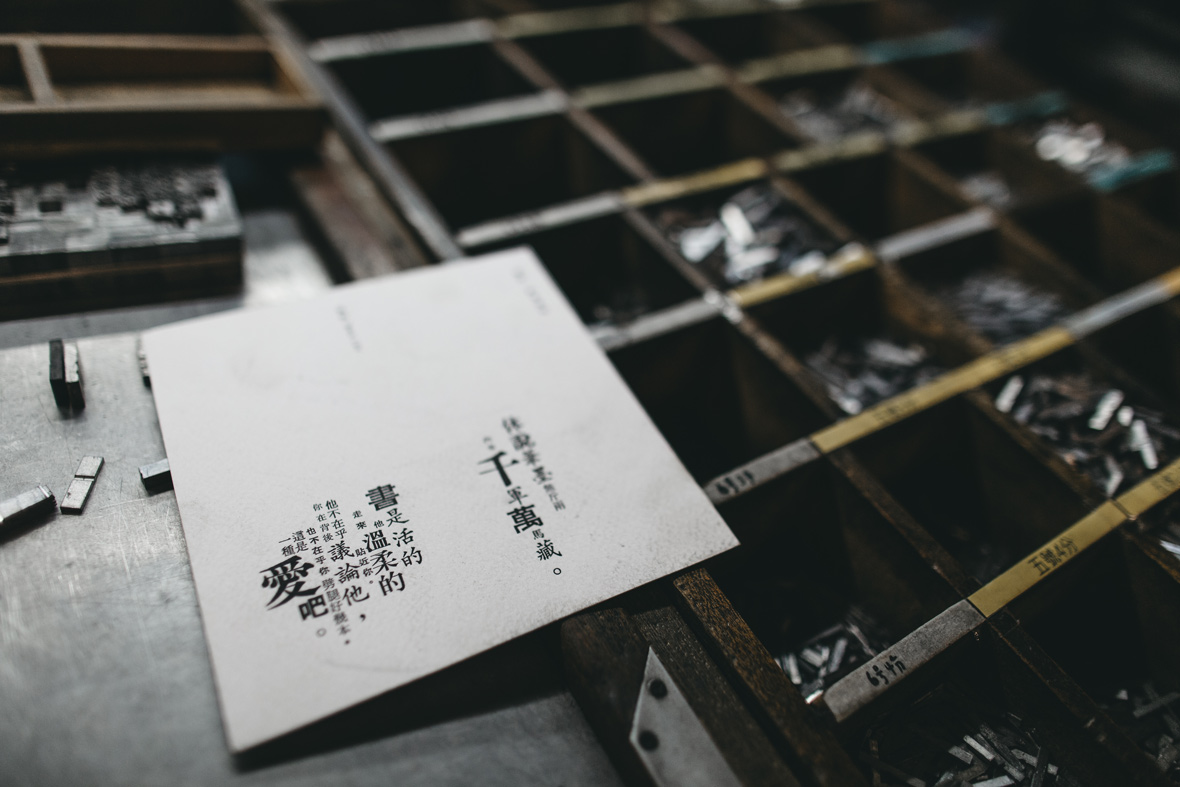
Unfortunately, as new printing techniques became available, letterpresses and the need for movable types went on the decline. In Western countries, letterpresses have been given a second life. But in the East, letterpresses are being rendered obsolete, with many viewing them as inefficient and dated. In Hong Kong and Taiwan, the only places in the world that still uses traditional Chinese characters, letterpresses are nearly extinct. As a result, movable type created with traditional Chinese characters are no longer needed and the foundries that made them began closing down one by one. Today, the only foundry left in the world that still makes traditional Chinese movable types is Rixing Type Foundry.
可惜的是,隨著新印刷方式的普及,活版印刷以及鉛字鑄造的市場需求都在急速衰退。活版印刷在西方重煥生機,但在東方卻被視為低效和過時的代表而應被淘汰。在全世界僅剩的使用繁體中文的地方——香港和台灣,活版印刷幾近絕跡。如此一來,繁體中文的鉛字鑄造也無法在市場上生存,相關鑄字行相續倒閉。目前,全球就僅剩下日星鑄字行依舊在開業繼續著繁體字的鑄字。
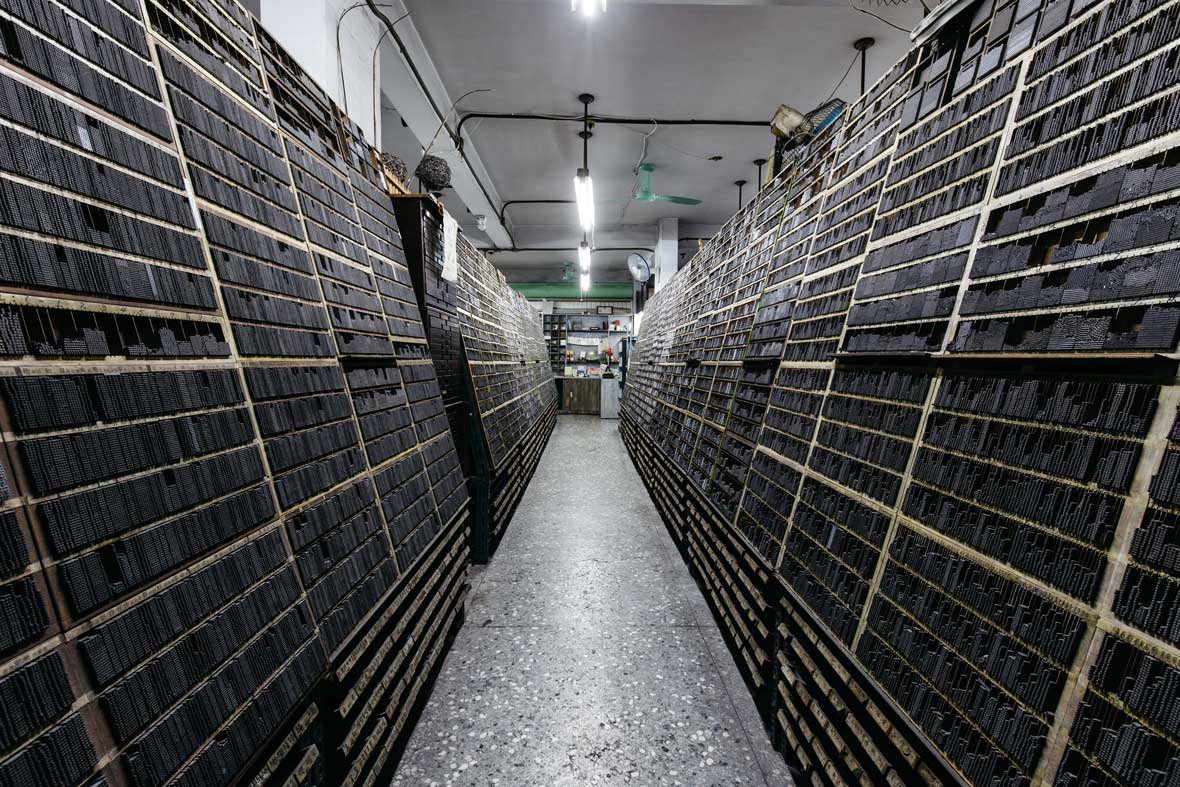
Located in Taipei’s Datong District, Rixing is inconspicuously tucked away in an unremarkable alleyway that looks like any other one of the countless alleys in the city. Row after row of wooden shelves fill the room, with every shelf filled to the brim with lead cast movable types. The traditional Chinese characters are all faced outwards, allowing visitors to easily browse through the impressive collection. At the back of the display area is a small room filled with casting machines, various tools, and bars of lead; the narrow space is the typecasting room where all of Rixing’s movable types are created.
位於台北大同區的日星鑄字行,藏匿於一條不起眼的小巷中,在這個城市 ,你可以找到無數條相似的胡同和街道。但置身於這個古樸的鑄字行,放眼望去,全是一排排的木架和每行木架上擺滿的鉛字塊,所有鉛字的繁體中文面一致對外,讓人立刻就能感受到這浩大的收藏量。展示區後面是一個小小的鑄字房,狹小的空間裡堆滿了熔鑄機,各種工具和鉛材,但這裡就是日星創造出所有鉛字成品的地方。
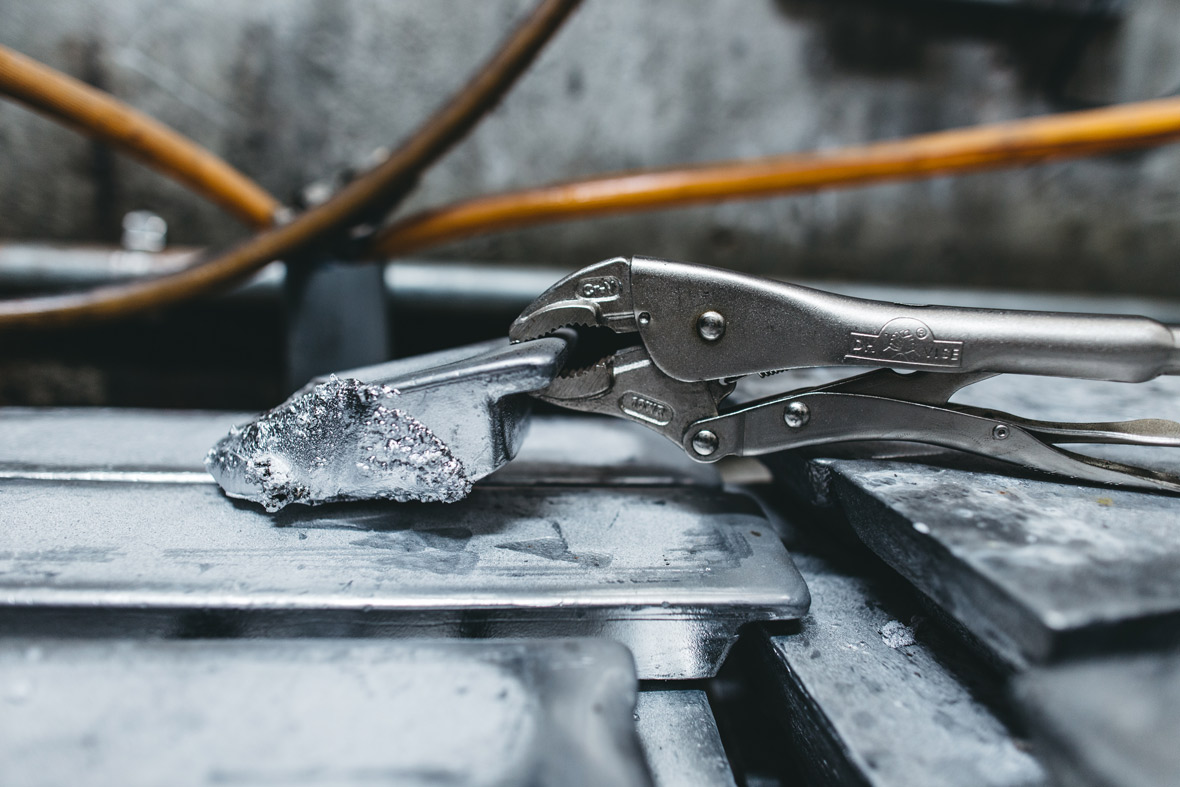
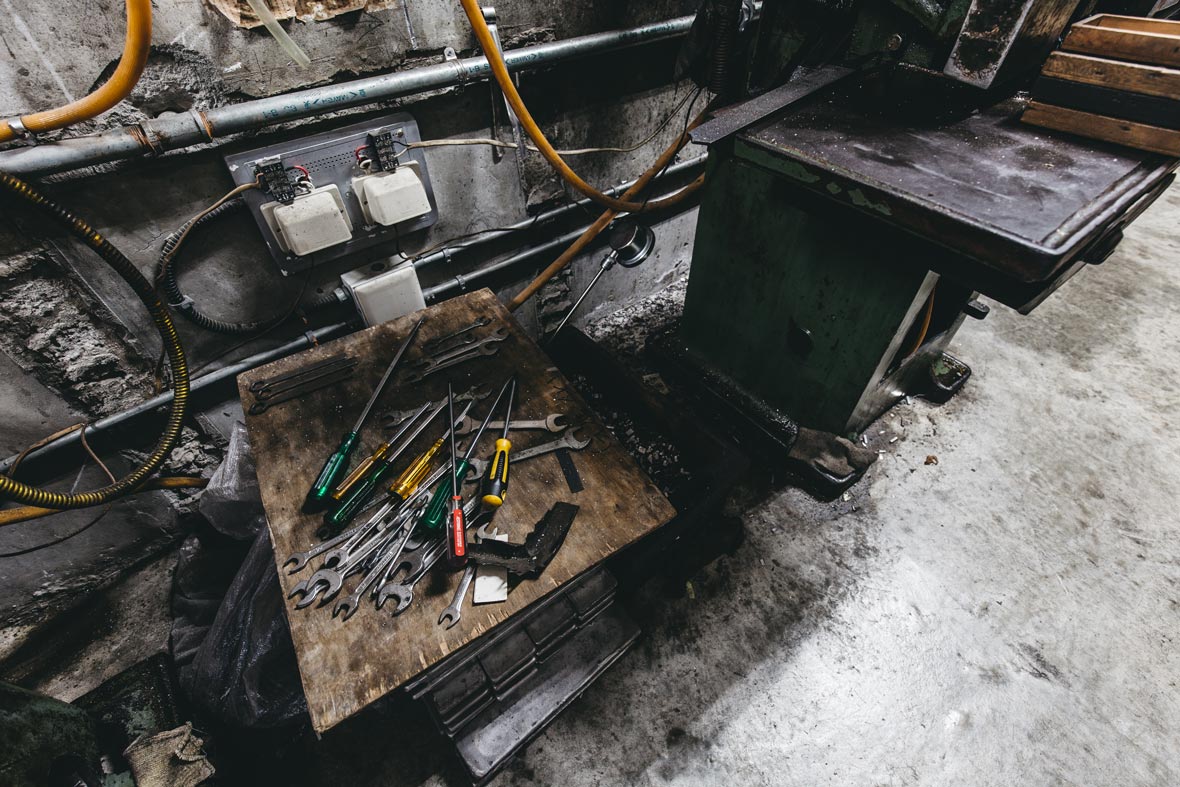
Rixing Type Foundry was established in 1969 and most of their business today comes from loyal customers that have been going to them for decades. Their newer clienteles tend to be individuals looking to make specialty prints or small local print shops. Rixing was founded by Zhang Yilin and the current owner is his son, Zhang Jieguan, who is not only preserving traditional Chinese movable type but also his father’s legacy. Originally, Jieguan had aspirations of becoming a mechanic. A sense of familial obligation to carry on his father’s work resulted in him abandoning that route. Instead, he began working alongside his father at the foundry. Jieguan fondly says, “When I look at these rows and rows of lead type now, it feels like my father is still here with me.”
日星鑄字行創立於1969年,現今公司的大部分業務都是來自與他們打了幾十年交道的忠實客戶。新客戶往往是尋求個性化印刷成品的個人或者當地的小型印館。日星由張錫齡先生創立,現由其子張介冠接手,不僅為保護繁體中文的鉛字鑄造,也為傳承父親的遺業。最初懷抱成為一名機械師志向的張介冠,因著子承父業的家庭責任感而放棄了原來的職業之路,轉而開始在鑄字行裡和父親並肩工作。他深情地表示:「看到這一排排字架,就好像父親仍在身邊一樣。」
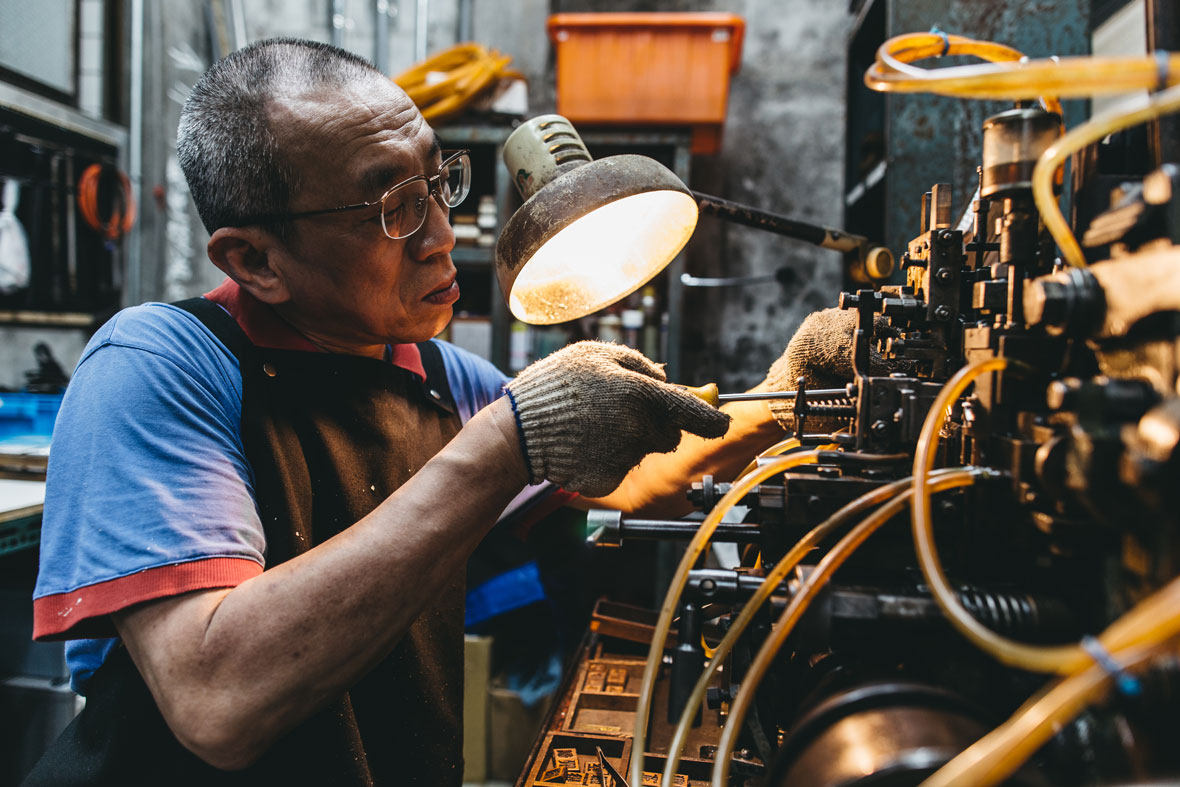
During the 1990s, many letterpresses and foundries were already beginning to disappear due to diminishing demand and technological advancements. In the face of adversity, Zhang Jieguan remained persistent, refusing to close down the foundry. He made a promise, saying: “As long as there’s even one letterpress around that needs lead type, Rixing will be around. I’m going to see this through to the end.” By 2006, Jieguan realized that Rixing was the only foundry left in Taiwan and shifted his focus towards figuring out how to keep this craft alive.
上世紀90年代,隨著市場需求的萎縮和技術的進步,許多活版印刷廠和鑄字行一間一間倒閉。逆境之下,張介冠仍執著堅守、苦心經營,立誓:「只要還有一家活版印刷廠需要鉛字,日星鑄字行就會陪他們走到最後。」到了2006年,張介冠意識到日星業已成為台灣唯一倖存的鑄字行,並將重心轉移至如何保護這項工藝並將他們傳承下去。
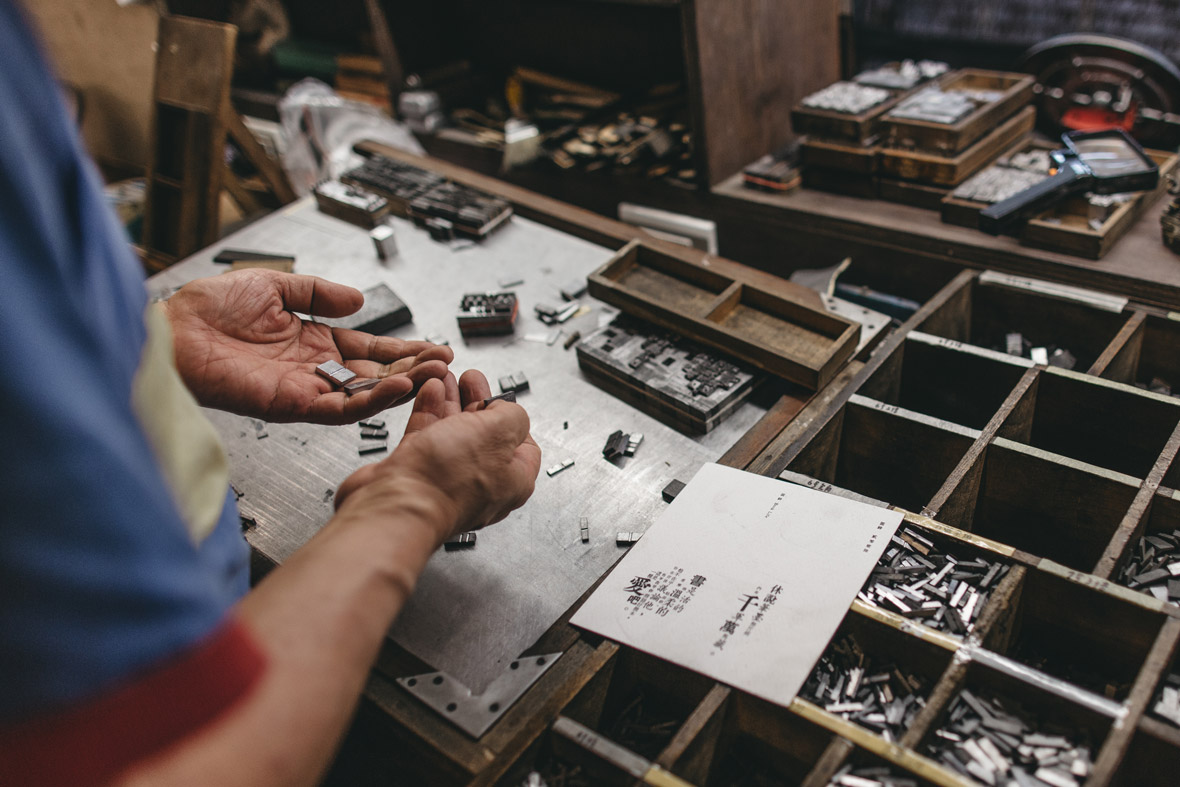
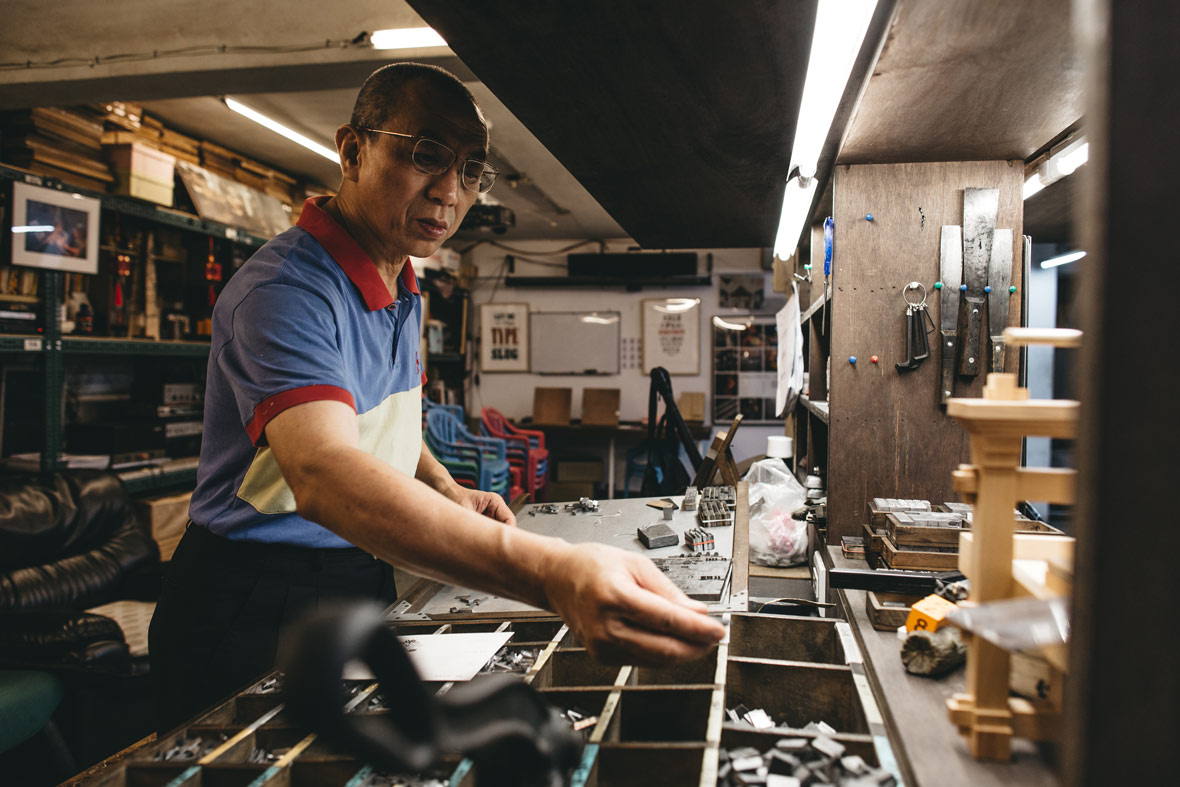
Rixing’s end goal isn’t to naively keep this craft going as merely a business; their vision is for movable lead type to ultimately become a cultural symbol. In 2012, Taipei City’s Department of Cultural Affairs began working together with Rixing to help organize and promote different activities and workshops in the space. As part of the preservation efforts, many of the typefaces are also in the process of being digitized. There are also plans to transform the space into an interactive museum, so that this slice of culture and history can be shared with future generations.
日星的最終目標並不只是天真地將這項工藝作為一項商業行為繼續下去,而是不斷推進將鉛字變成一個文化符號。2012年台北市文化局開始介入,協助日星,幫忙組織推廣日星舉辦的一系列活動和研習班。作為這項工藝保護工作的一部分,很多鉛字字體也在進行數字化。除此之外,日星的工廠也將被轉變為互動工藝館,以為與後人分享這一文化和歷史。
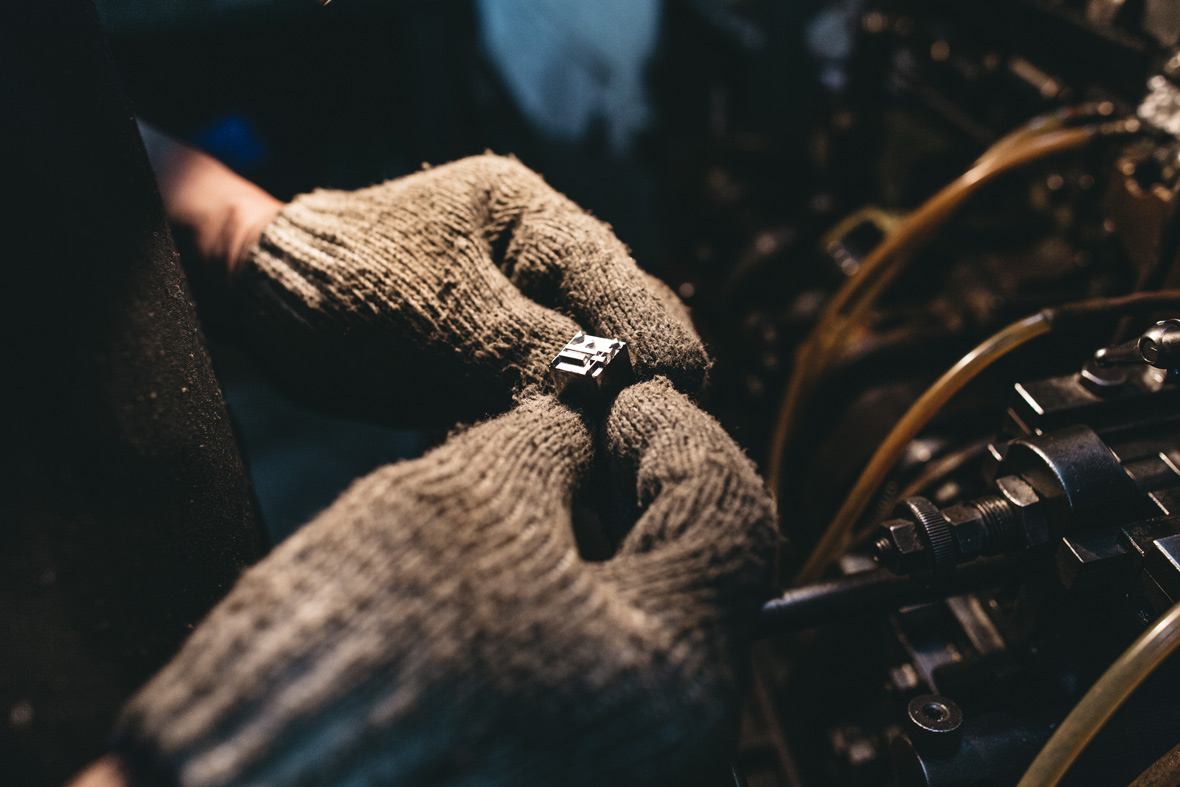
Address:
No. 13, Lane 97, Taiyuan Rd
Datong District, Taipei
Taiwan
Hours:
Monday~Friday, 9am~noon, 1:30~6pm
Saturday, 9:30am~noon, 1:30~5pm
Closed Sundays
Phone:
+886 2 2556 4626
Website: letterpress.org.tw
Facebook: ~/rixingtypefoundry
Contributor & Photographer: David Yen
地址:
台灣
大同區 台北
太原路97弄13號
營業時間:
週一至週五,早上9點至中午12點,下午1點半至晚上6點
週六,早上9點半點至中午12點,下午1點半至晚上5點
周日定休
電話號碼:
+886 2 2556 4626
網站: letterpress.org.tw
臉書: ~/rixingtypefoundry
供稿人與攝影師: David Yen


